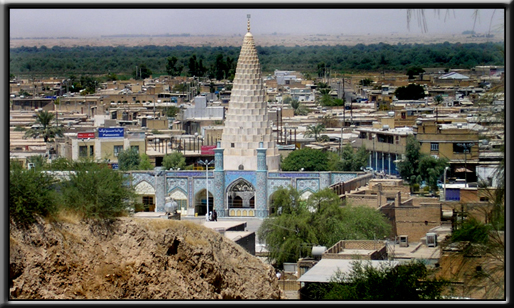
=========================
The film is the story of Atiyeh, a young radio show host specializing on "relationships", who is suffering a terminal illness and will die in 4 months, unless she agrees to a risky surgery (which she refuses to have).
Her desperate husband brings her on a pilgrimage to Mashad. She is not a believer, but she becomes overwhelmed by the power of other's faith, and recognizes in her the love for ...
A Marvelous film, about belief, faith, pain, death, love, life ... shot against the rarely seen backdrop of Imam Reza's Shrine in Mashad.
=========================
By: Rasoul Sadrameli
Born in Isfahan, Iran in 1953, Rasoul Sadrameli studied sociology in France before returning to Iran to produce Ami Ghavidel's RAIN OF BLOOD (1981) and make his directorial debut with THE RELEASE (1982). He has since directed THE CHRYSANTHEMUMS (1983), PAIZAN (1987), THE VICTIM (1991), TEHRAN SYMPHONY (1993), THE GIRL IN THE SNEAKERS (1999), I'M TARANEH, 15 (2002) and DISHAB BABATO DIDAM, AIDA(2005).
Sadr Ameli is a post-revolutionary director, who opened the peri-war Iranian cinema to "love" stories: In "golhaye Davoodi" (THE CHRYSANTHEMUMS (1985)).
 Leila Hatami is great in her role. (The great Iranian director, Ali Hatami first cast his daughter in Delshodegan, where she played the role of a blind Turk princess, wandering in a rose garden in search of her Persian singer. Ever since, Leila Hatami has played in numerous films, often type cast as an elegantly eccentric woman in 'search' of something lost ... and she plays her type WELL.)
Leila Hatami is great in her role. (The great Iranian director, Ali Hatami first cast his daughter in Delshodegan, where she played the role of a blind Turk princess, wandering in a rose garden in search of her Persian singer. Ever since, Leila Hatami has played in numerous films, often type cast as an elegantly eccentric woman in 'search' of something lost ... and she plays her type WELL.)I loved the poetry (Death of Swan By Hamidi, plus a lot of Hafiz).
The colours were vivid: the golden shrine, decorated with blue ceramics and glittering mirrors, marble mosaics, ruby red Persian rugs (source of pictures above!).
Of course the music by Mohammad-Reza Aligholi was another highlight of this wonderful two hours spent on passion, reflection and interospection.
AND ... this movie was made by assistance from a Mullah, which made me chuckle as i saw the titles, but then I came to realize that without the assistance of the "Hojat El-Eslam", no camera would have gained permission to go to the pilgrimage site. In fact the only other times I have seen the Imam-Reza Shrine on celluloid has been in Baraka, and in the last episode of Pasolini's, Trilogy of Life!
And this, to me, "is" velvet REVOLUTION
... Americans, Monarchists and the MKO:
HANDS OFF OF IRAN!
Let our artists do their job: Persian Renaissance!


